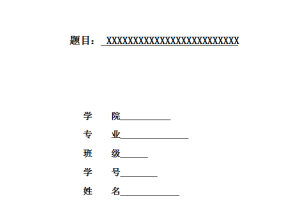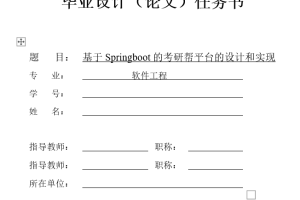摘要:盈利能力是企业营销能力、作为江南富庶之府,杭城是中国民族工商业的发祥地之一。而后许多曾位于城区中心辉煌多时的工企业因自身经营、地价变化、政府的规划调整等原因逐渐停工或迁出,工业企业逐步淡出主城区,给处理这些工业建筑遗产的“身后事”提出了新课题。厂房、仓库、水塔、码头、冶炼炉、烟囱、铁轨等,承载了企业发展史的工业遗存,在通常人的眼里,已是过时的弃儿,现代城市的“伤疤”。后来受到各方文化及一些极具前瞻性的各界人士的影响,人们逐渐意识到废旧厂房的改造对寻求人、建筑与环境的相互依存是非常重要的。本文以loft49、杭丝联、和创园三个创意园为对象,分析杭州旧工业厂房空间改造再利用而成的创意园模式现状,结合案例,分析未来创意园区的发展趋势和设计理念。
关键词:创意园区;空间的再利用;旧工业厂房;空间设计
Evaluation of the Profitability of Listed Companies
Abstract: Profitability is the marketing ability, as the southern rich house, Hangzhou is one of the birthplaces of Chinese national industry and commerce. Located in the city centre and has many brilliant time enterprises due to their own business, price change, government planning adjustment, gradually shut down or moved out of urban industrial enterprises gradually fade out, to deal with the industrial architectural heritage “things behind” new topic. Workshop, warehouse, wharf, water tower, smelting furnace, chimney, rail, bearing the history of the development of enterprises in the industrial heritage, usually people’s eyes, is now an obsolete outcast, modern city “scar”. Later by the parties to the culture and some forward-looking people from all walks of life, people are gradually aware of the transformation of the old factory building to seek people, the construction of the environment and the interdependence is very important. In this paper, loft49, hang wire together, and a garden, three creative park as the research object, analysis of Hangzhou old industrial building space transformation and utilization, and the creative park model combined with the case, analysis of the development trend of the future and the design idea of creative industrial park.
Key words: Creative Park; Reuse of space; Old industrial building; space design
目 录
1 引 言……………………………………………………………………………………………………………………. 1
1.1 选题的背景…………………………………………………………………………………………………………………………………………………… 1
1.2 选题的研究意义…………………………………………………………………………………………………………………………………………… 1
1.3 国内外研究现状 ………………………………………………………………………………………………………………………………………….. 2
1.4 课题的研究内容与方法……………………………………………………………………………………………………………………………….. 4
2 基于调研的创意园区分析…………………………………………………………………………………………… 6
2.1 基于旧厂区空间打造的创意园概述…………………………………………………………………………………………………………….. 6
2.1.1杭城创意园发展历程简述……………………………………………………………………………………………………………………………. 6
2.1.2“loft49”作为初创“产品”的特殊性………………………………………………………………………………………………………………… 6
2.1.3“杭丝联”作为过渡“产品”的价值…………………………………………………………………………………………………………………. 7
2.1.4“和创园”作为未来“产品”的意义…………………………………………………………………………………………………………………. 8
2.2 基于旧厂区打造的创意园“模式”现状…………………………………………………………………………………………………………. 8
2.2.1 基于租赁的园区盈利模式…………………………………………………………………………………………………………………………… 8
2.2.2 基于业态布局的园区定位…………………………………………………………………………………………………………………………… 9
2.2.3 基于系统思维的园区规划…………………………………………………………………………………………………………………………… 9
2.3 基于旧厂区打造的创意园“空间”………………………………………………………………………………………………………………. 10
2.3.1 关于“空间”范畴的阐释…………………………………………………………………………………………………………………………….. 10
2.3.2 “空间”的“再利用”要素……………………………………………………………………………………………………………………………… 10
2.3.3 “空间”的“再利用”特征…………………………………………………………………………………………………………………………….. 11
2.3.4 “空间”的“再利用”可行性………………………………………………………………………………………………………………………….. 11
2.3.5 创意园区的空间及室外景观的塑造…………………………………………………………………………………………………………. 11
2.3.6 创意园区的建筑外观的再利用…………………………………………………………………………………………………………………. 12
2.3.7 创意园区的旧设备等的再利用
现代技术、设备的应用是旧工业厂房再利用的重要环节。大多数旧厂房的设备简陋,不能满足新的功能要求。因此引入电子设备、消防安全、安保监控设施等现代技术设备将很大程度改善旧厂房的环境,而这些设备的应用也会对旧厂房已有的空间产生一定影响。因此,在设计的过程中应注意设备与旧厂房原有空间的关系。 改造时还应尽量利用原有的设备和管道、器械等,以实现资源的合理运用和对旧厂房的陈旧感的遵从。………………………………………………………………………………………………………………….. 12
2.3.6 创意园区的视觉导视设计…………………………………………………………………………………………………………………………. 12
3 基于案例分析的未来创意园区的发展趋势……………………………………………………………………. 13
3.1 未来创意园区的业态布局………………………………………………………………………………………………………………………….. 13
3.1.1 专业化的发展趋势…………………………………………………………………………………………………………………………………….. 13
3.1.2 特色化的打造之路…………………………………………………………………………………………………………………………………….. 14
3.2 未来创意园区的空间设计………………………………………………………………………………………………………………………….. 16
3.2.1 趋势保护与利用共生………………………………………………………………………………………………………………………………… 16
3.2.2 系统设计的发展趋势………………………………………………………………………………………………………………………………… 16
4 结 论…………………………………………………………………………………………………………………… 16
参考文献…………………………………………………………………………………………………………………… 17



